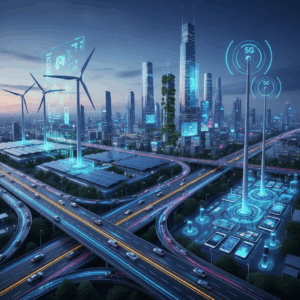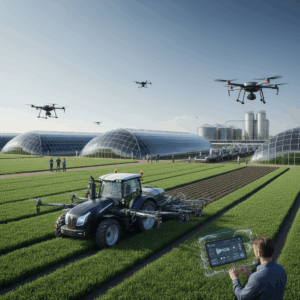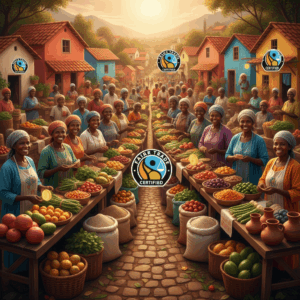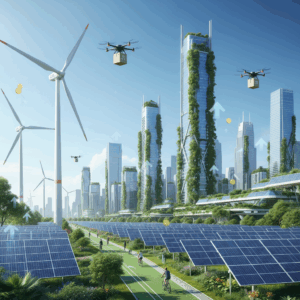Definition and basic principles of the circular economy
The circular economy It is an innovative model that transforms the way we produce and consume, moving from a linear to a circular system. It seeks to maximize the use of resources.
This model is based on extending the useful life of products and materials, avoiding the waste generated by the traditional model, which follows the produce, use and throw away scheme.
Its objective is to reduce environmental impact and optimize the use of resources, promoting a more sustainable and efficient production and consumption system.
Concept and transition from the linear to the circular model
The linear model is characterized by a process where products are manufactured, used, and ultimately discarded without significant reuse. This generates large amounts of waste.
The transition to a circular economy involves changing to a cyclical system in which resources are kept in use for longer through reuse and recycling.
This transformation allows minimizing the extraction of raw materials and reducing the environmental impact, promoting a comprehensive view of the product life cycle.
The four R's: reduce, reuse, repair, and recycle
The four “R”s constitute the key principles of the circular economy: reduce consumption, reuse materials, repair products, and recycle waste to reintegrate it into new processes.
Reducing means decreasing production and consumption to the minimum necessary to avoid excess and waste. Reusing seeks to give objects multiple uses instead of discarding them prematurely.
Repair extends the lifespan of products, preventing their early replacement, while recycling turns waste into new resources to manufacture other products.
Cycles and materials in the circular economy
The circular economy distinguishes between two fundamental types of cycles: the technological and the biological. Both aim to keep materials in constant use, avoiding waste.
These cycles allow products and materials to have multiple lives, ensuring that resources are used efficiently and polluting emissions are reduced.
Furthermore, transforming waste into new resources is key to closing the loop, recovering economic and environmental value for society.
Technology cycle: design for recovery and recycling
The technology cycle includes materials and products that can be recovered, repaired, and recycled multiple times, such as metals, plastics, and electronic components.
To facilitate this cycle, products must be designed with disassembly and recycling in mind, avoiding complex mixtures that hinder the recovery of materials.
This approach allows resources to return to the production chain, reducing the need to extract virgin raw materials and decreasing the pollution generated.
Biological cycle: biodegradable materials and safe return
The biological cycle is based on materials that can decompose and return to the environment without causing harm, such as biomass, paper, and certain biodegradable polymers.
These materials must guarantee a safe return, promoting soil fertility and closing the natural cycle without negatively impacting ecosystems.
Incorporating biodegradable materials into products and packaging helps reduce the volume of waste that ends up in landfills or pollutes the environment.
Converting waste into resources
One of the pillars of the circular economy is transforming waste into useful resources through processes such as recycling, composting, and energy recovery.
This conversion allows for the extraction of secondary raw materials, preventing waste from becoming an environmental problem and promoting a more efficient production system.
In this way, waste ceases to be garbage and becomes inputs for new products, strengthening the circular economy and sustainability.
Innovation and change in production and consumption
The circular economy drives the innovation in production and consumption, promoting products with less environmental impact and greater durability. This change is essential for sustainable development.
A model is promoted where the design and use of goods prioritize resource efficiency, facilitating repair, reuse and recycling, and at the same time transforming traditional consumption habits.
Thus, the circular economy not only improves production processes, but also redefines the relationship of people with products, promoting conscious and responsible consumption.
Eco-conception and sustainable product design
Eco-design involves designing products considering their environmental impact from the initial stage, seeking to minimize waste and facilitate their repair or recycling.
This approach promotes durability and modularity, allowing products to have a long lifespan and adapt to new needs without being completely replaced.
In addition, sustainable materials and less polluting manufacturing processes are used, contributing to reducing the ecological footprint throughout the entire product life cycle.
Functionality economy and sharing
The functionality economy focuses on offering services based on the use of products rather than their ownership, promoting rentals and shared models.
This change reduces the demand for mass production, while optimizing the use of resources and reducing waste generation by maximizing the useful life of goods.
Sharing also fosters greater environmental and community awareness, encouraging access to products without the need for individual purchase, which benefits both the planet and society.
Benefits and challenges of the circular economy
The circular economy offers economic, social and environmental advantages that contribute to sustainable development and efficient use of natural resources.
However, its implementation faces significant challenges, such as technological, cultural, and regulatory changes that must be overcome to consolidate the model.
This approach aims to balance economic growth with environmental conservation and improved social well-being, requiring a joint commitment.
Economic, social and environmental impacts
From an economic point of view, the circular economy generates new employment opportunities and fosters innovation in sustainable processes and products.
Socially, it promotes responsible practices and inclusion, improving the quality of life and encouraging conscious consumption in diverse communities.
Environmentally, it significantly reduces waste generation and the exploitation of natural resources, decreasing pollution and the ecological footprint.
Contribution to sustainability and resource management
The circular economy improves sustainability by optimizing the use of materials, promoting their reuse and recycling to close production cycles.
This model helps to conserve ecosystems and avoid shortages of raw materials, mitigating the negative impacts derived from their extraction.
It also promotes more efficient waste management, encouraging the transformation of waste into valuable resources for the economy.






